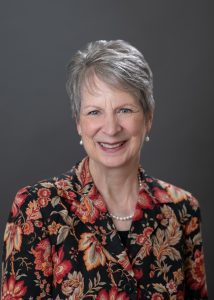Magazines had piled up: three weeks of New Yorkers, The Atlantic Monthly, National Geographic, The New York Review of Books, Writer’s Chronicle, Smithsonian, Creative Nonfiction, Poets & Writers, and a few education periodicals. I also had several unread e-books downloaded on my iPad and a couple dozen hard covers and paperbacks stacked on the end table beside my recliner.
“Enough,” my inner voice said as I added yet another book to my Amazon Wish List.
At that moment, the FedEx truck pulled up. The driver beeped his horn. It was a package for me, a surprise gift from a former student.
A book. What a coincidence!
I placed the book on top of my stack. Then I opened the fall issue of Independent School. In an article titled, “The Science of Spirituality Informs a New Developmental Model,” Columbia University professor Lisa Miller presented a chart-form summary of developmental tasks with a spiritual core and without. For instance, the task of establishing one’s identity with spirituality focuses on meaning and purpose; without a spiritual core, the focus is on acquiring success. In finding work, those with a spiritual core tend to use the words “calling” or “contribution” rather than “talents” or “gains.”
I don’t believe in coincidences.
So when I reached the bottom of the magazine pile, I decided to read the gift book next, ahead of all the others clamoring for my attention.
Descent into Love begins with the author Killian Noe in crisis. Her husband wants to accept a job in Seattle, moving the family from D.C. That means leaving her much-loved calling of nearly twenty years. After crying, “the kind of crying that makes your eyes puffy, your nose runny and your breath desperate,” she sits down. Then she hears a voice say, “Let go and trust.”
As it turns out, her calling hasn’t really ended. It just moves and takes a turn. Instead of creating healing communities, housing for addicted and mentally anguished women and men in D.C., Noe is called to establish Recovery Café, a gathering place for those in need of love and healing in Seattle.
 For most of my life, I felt called to be a teacher. I was also blessed to be a mother, and thought of that as a calling, too. But like leaves on the sassafras trees here at Vanaprastha, callings do change.
For most of my life, I felt called to be a teacher. I was also blessed to be a mother, and thought of that as a calling, too. But like leaves on the sassafras trees here at Vanaprastha, callings do change.
The sassafras has three distinct leaf patterns on the same tree: oval, mitten-shaped, and three-pronged. I had two callings, which patterned my adult life. Now I’m pursuing a third. I’m not sure where it will lead. But I’m doing my best to listen to that voice saying, “Let go and trust.”



Thanks for sharing. Good food for thought. Bonnie
Thank you for reading my blog post, and for your comment. CD
Enjoyed your post very much. Would love to hear about your “third” calling. Don’t you find it interesting how one “calling” prepares you for the next one in some way??? Nothing is ever wasted. Like you said…no coincidences. Thanks for sharing. “Lets go and trust” reminds me a little of “Let’s roll!” on 9/11.
Thank you so much for reading this post and commenting! My third calling? I think God calls us and just gets louder until we say, “Yes.” So I’m listening.